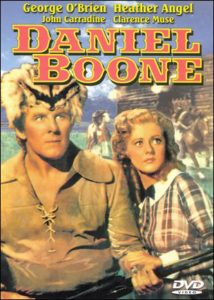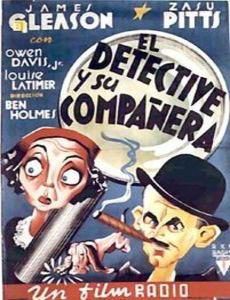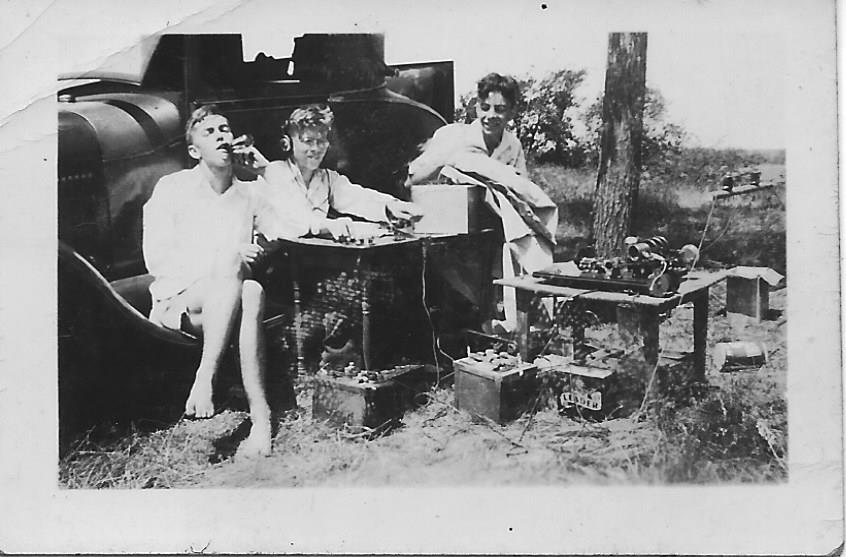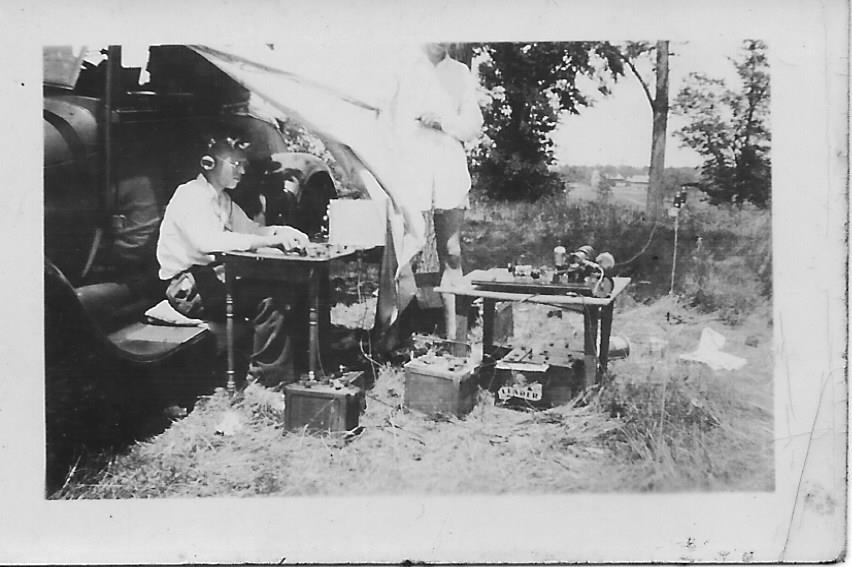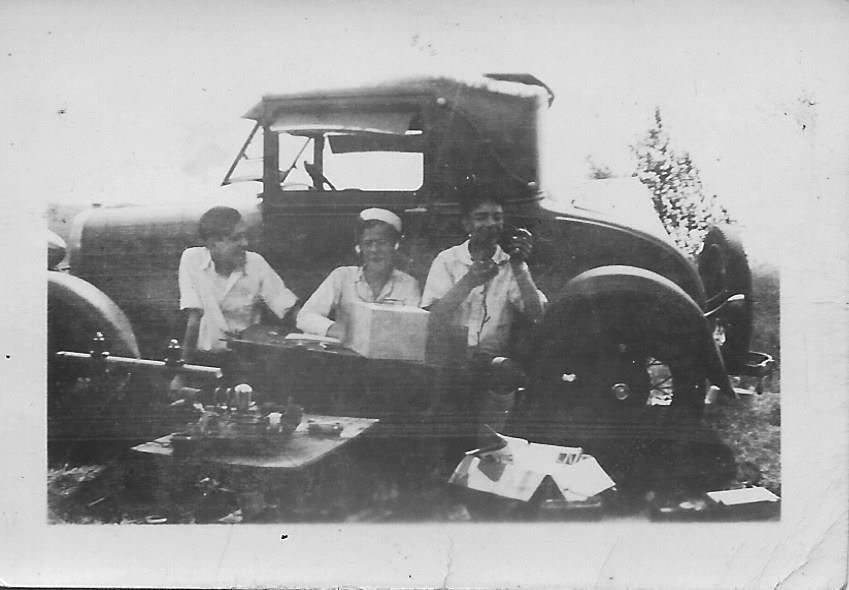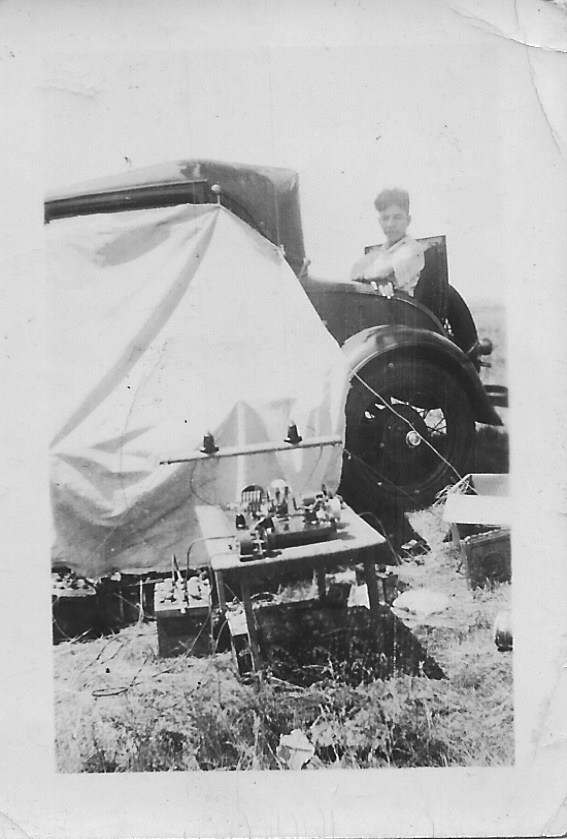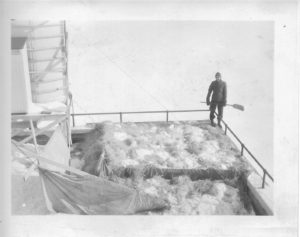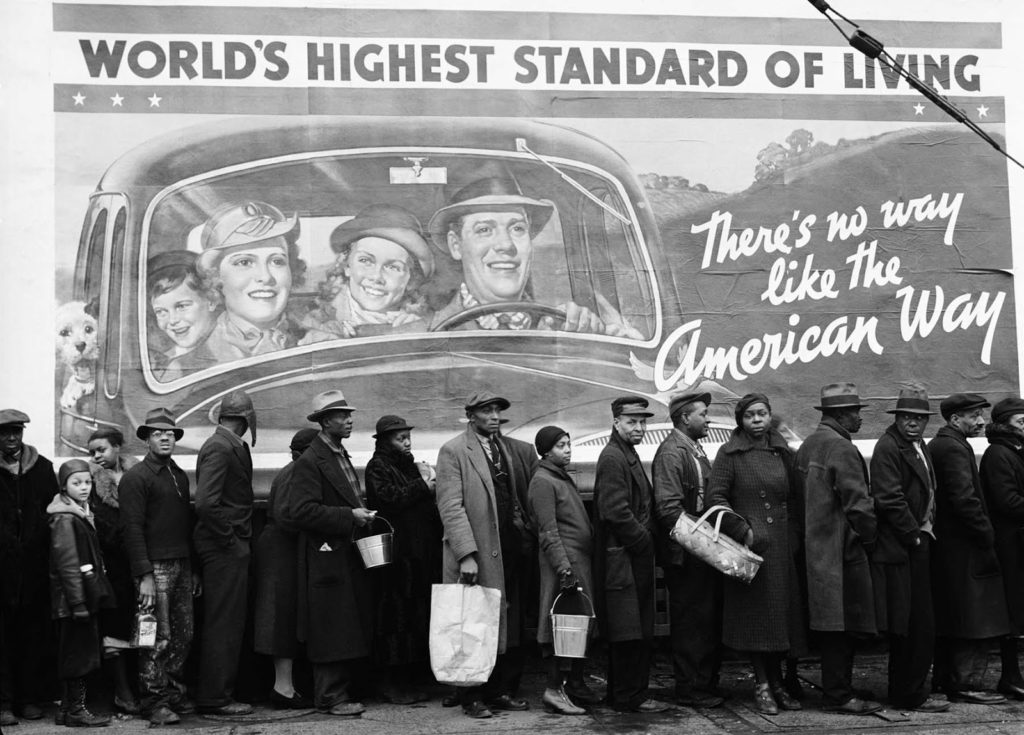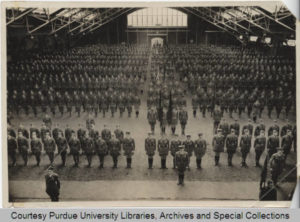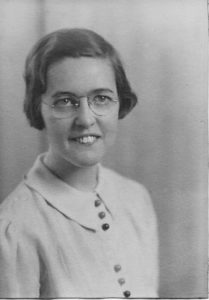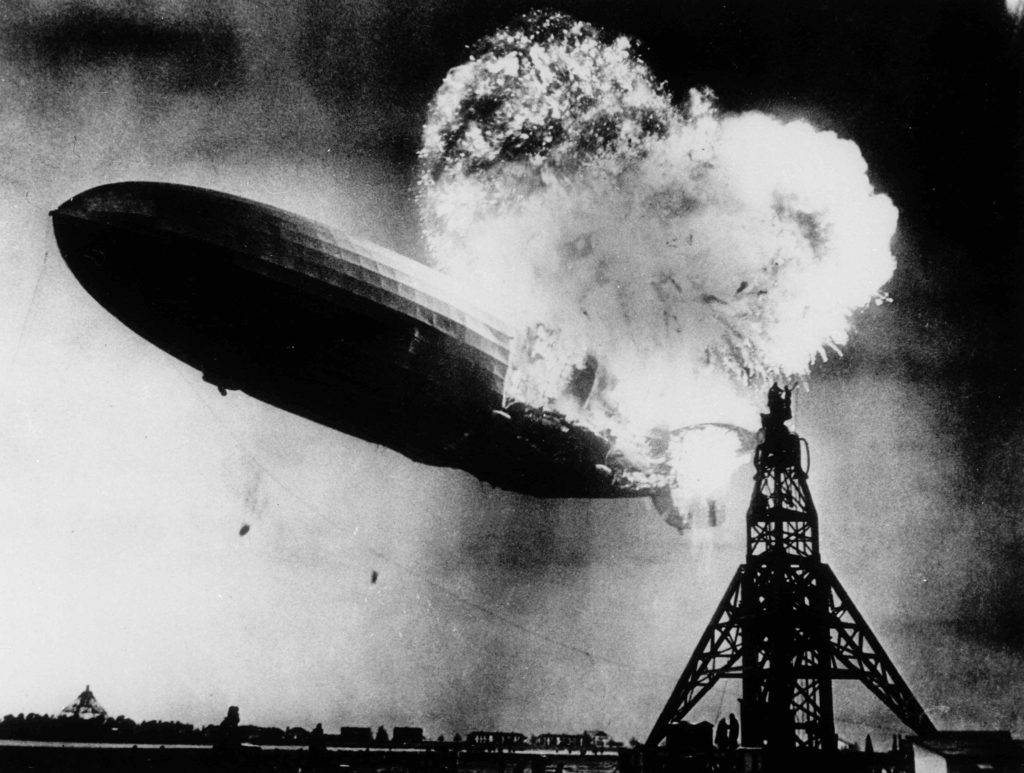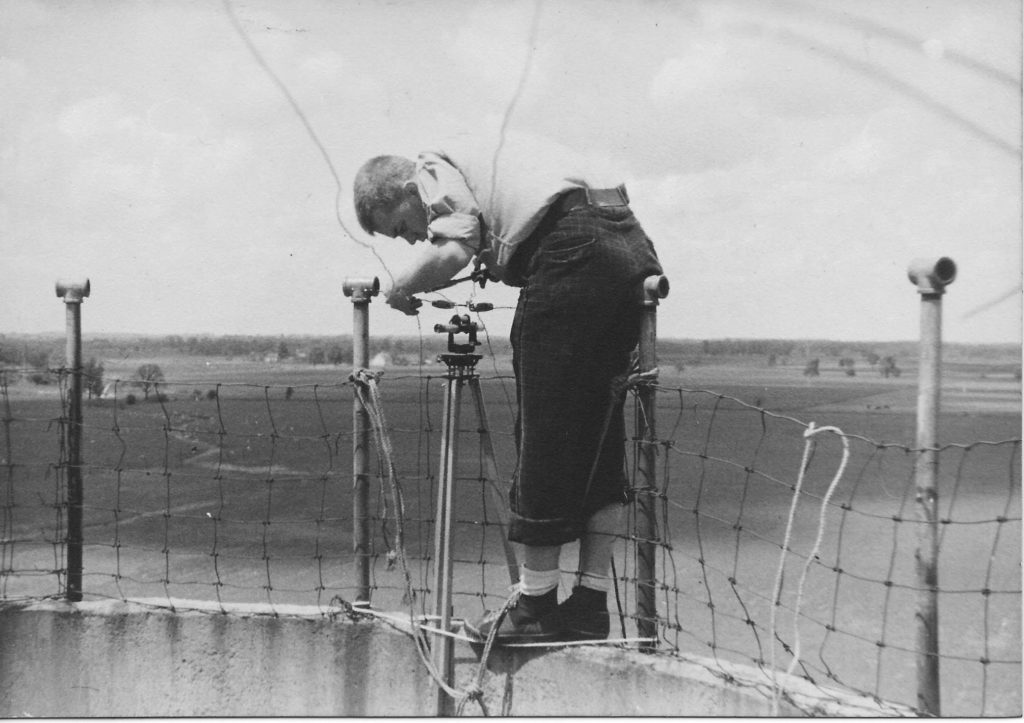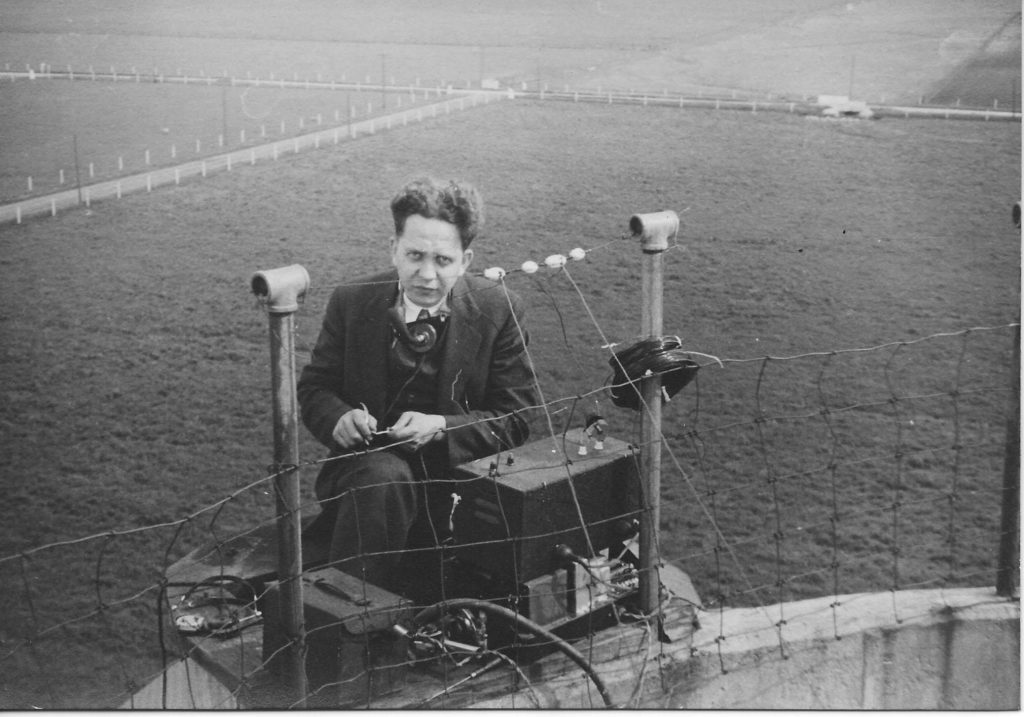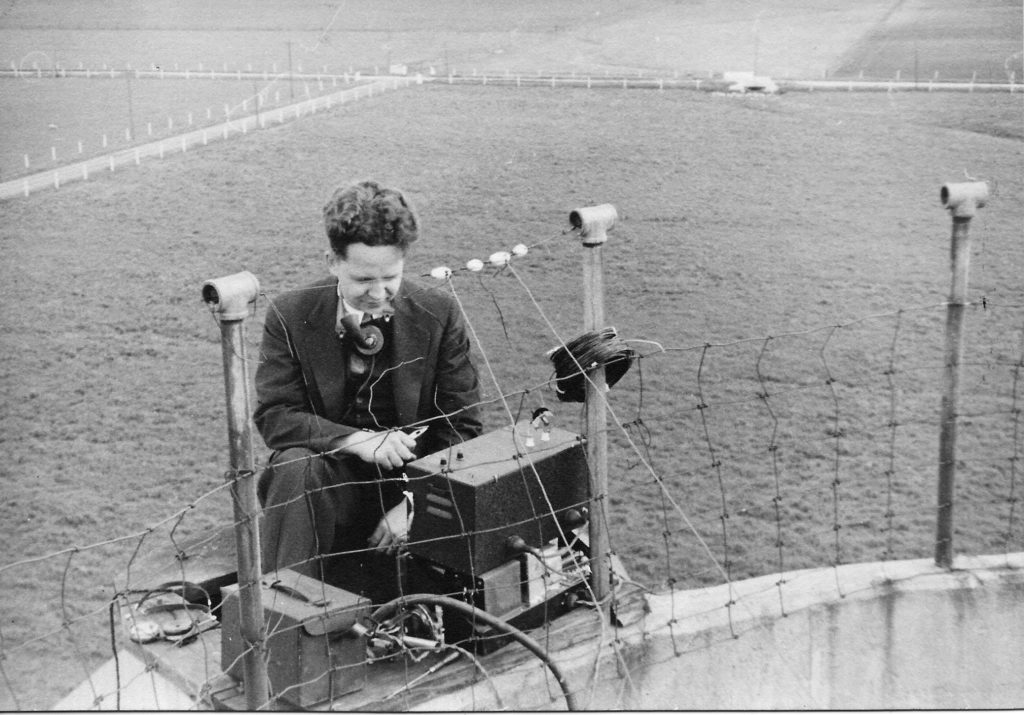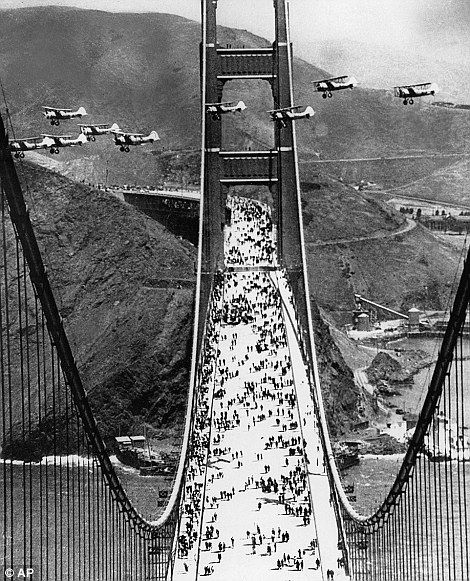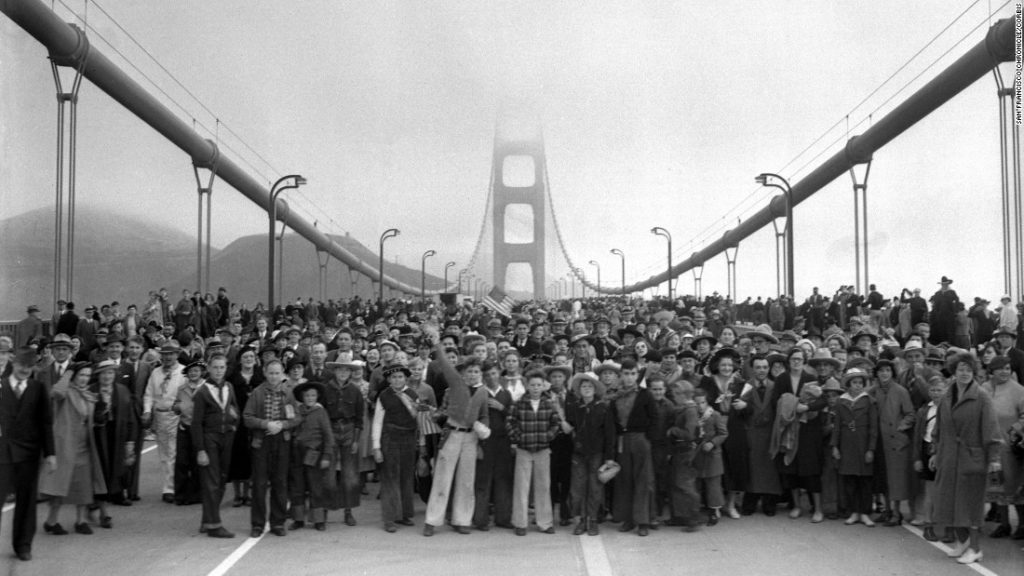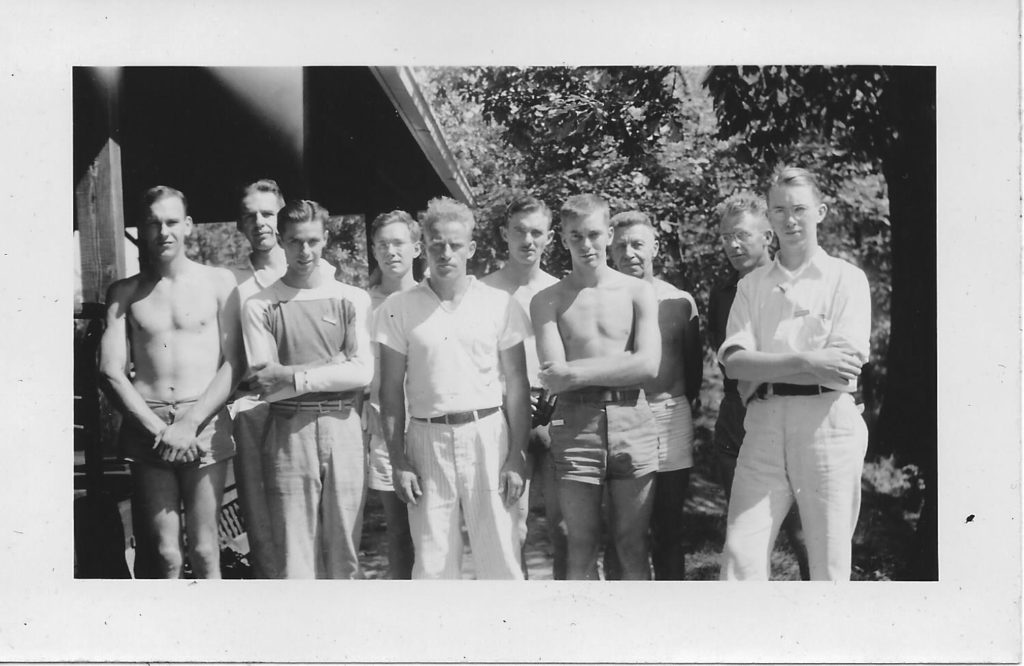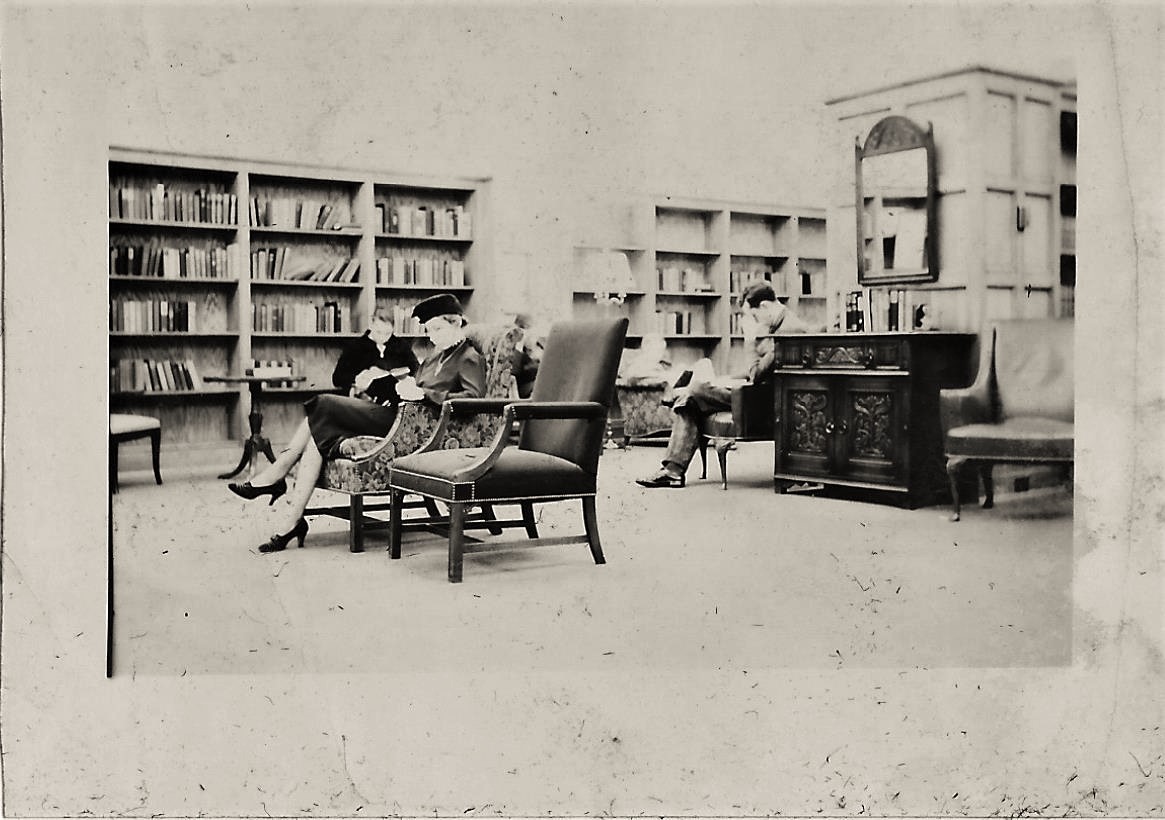PART I: The Spark
Historical notes from the author:
Mary Martha Willis was born in April 1914. I believe she left home shortly after graduating from Wheaton Central High School in about 1932 and was married to William Kennedy in about 1935. Afterwards they lived in Pasadena, CA.
Cyrus “Buddy” Stafford was born in May 1916. He went to Purdue University to study Engineering in 1935, after graduating from Glenbard Township High School in Glen Ellyn, Illinois.
January 19, 1913, Richard M. Nixon was born.
In 1916, Albert Einstein published, in final form, his ground-breaking Theory of General Relativity.
On May 29, 1917, John F. Kennedy was born.
World War I officially ended on November 11, 1918. “The Great War” or “The War to end all Wars” resulted in approximately 17 million dead and 20 million wounded.
During 1918-1919, an influenza pandemic across the globe result in the death of between 20 million and 40 million people.
The American prohibition on the sale of alcohol began in 1920 and would continue until its repeal in 1933.
November 20, 1925, Robert F. Kennedy was born.
July 4, 1926: The “Hitler Youth” organization is formed as part of Hitler’s plan to raise a generation of dedicated supporters of the Nazi party.
August 6, 1928, iconic modern artist Andy Warhol was born.
January 15, 1929, Martin Luther King, Jr. was born.
October 29, 1929 marked the end of the “Roaring 20’s” and the beginning of The Great Depression, which would last until 1939.
1932-1933: Stalin, in an effort for force Ukraine to join the Soviet system of collective farms, deports the most successful farmers as well as intellectual and cultural leaders. He then creates production quotas that can’t be met. This results in “Holodomor” or man-made famine. At least 4 million people in Ukraine die of starvation. See: http://www.holodomorct.org/history.html.
March 22, 1933: Nazi Germany establishes the first concentration camp at Dachau.
In 1933-34, Chicago hosted the World’s Fair with its theme, “A Century of Progress”.
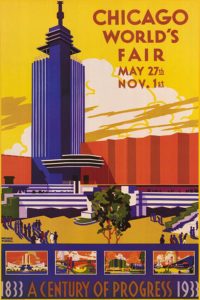
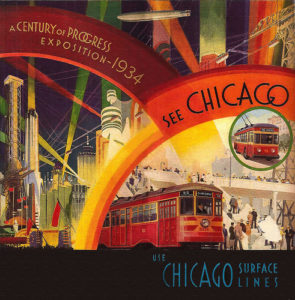
On January 8, 1935, Elvis Presley was born. He would grow up to be a pioneer in the rock & roll music world, propelling this new genre into the limelight. Music hungry teens were thrilled and their parents were terrified. Many still refer to him as “The King of Rock & Roll”.
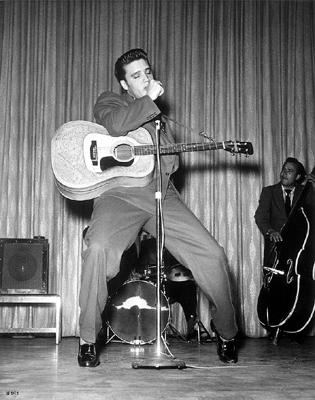
June 2, 1935: Babe Ruth retires from baseball.
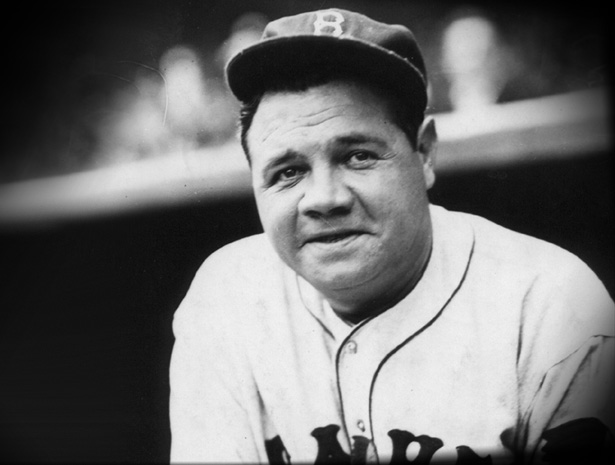
September 5, 1935: The Third Reich releases the film, “The Triumph of the Will”, considered to be one of the most innovative and effective propaganda films of all time. The film celebrates Hitler’s consolidation of power as the supreme leader of Germany and parades the legions of followers and formidable might of the military for all the world to see.
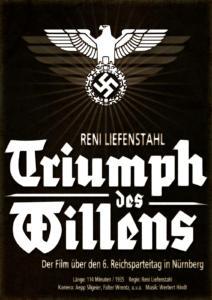
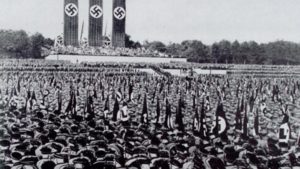
1936: Amelia Earhart was a consultant and technical advisor in the Purdue Department of Aeronautics, and she worked to increase female student enrollment. She also did research and preparations for her upcoming attempt to fly around the world.
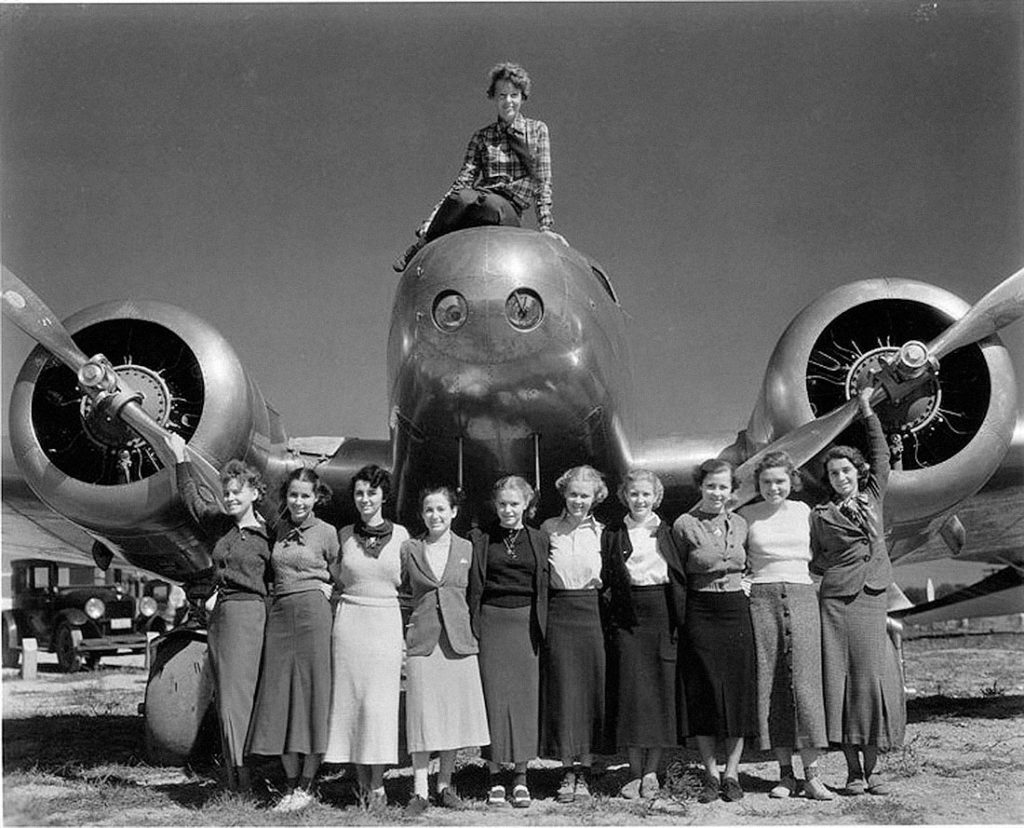
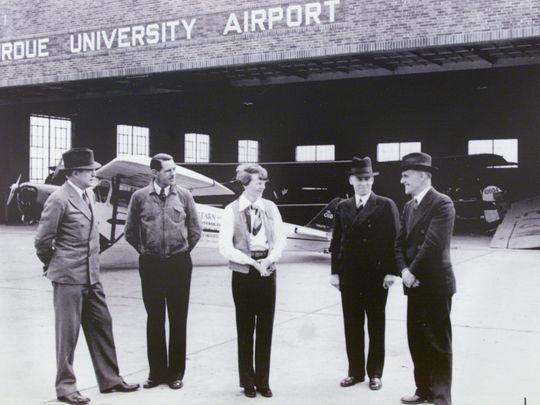
On August 14, 1936, the last public execution in America was conducted in Owensboro, Ky.
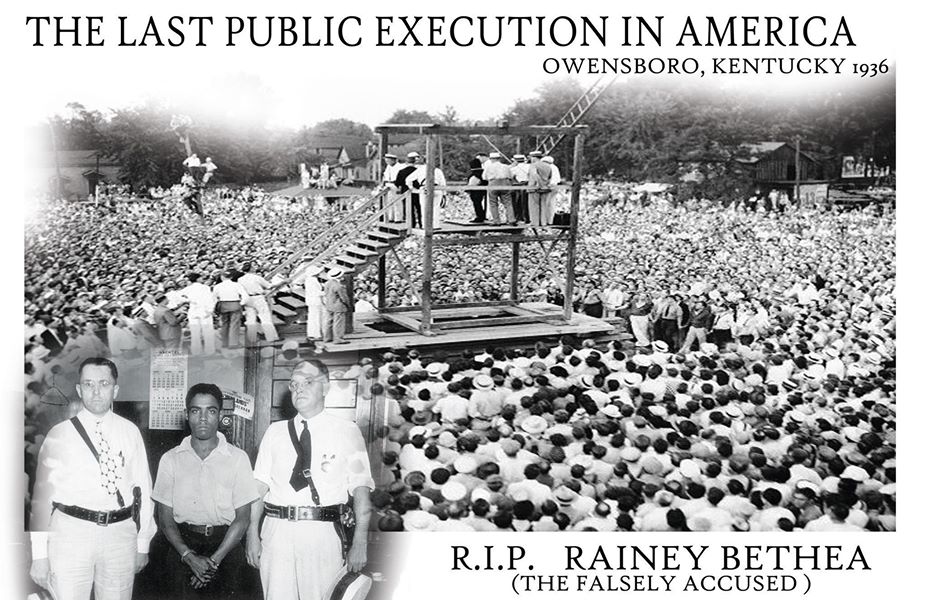
In August 1936, the Olympics were held in Nazi Germany.
Editor’s note: I will periodically post a scanned version of the original letter so that the reader is reminded of where the source material comes from and to enhance the experience of authenticity. The transcribed version of the letter will follow immediately after the original.
THE LETTERS
12/6/36
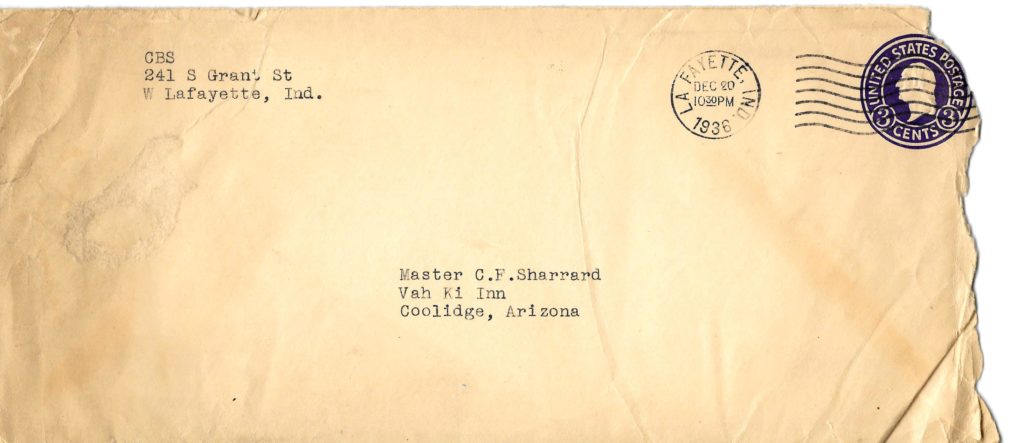
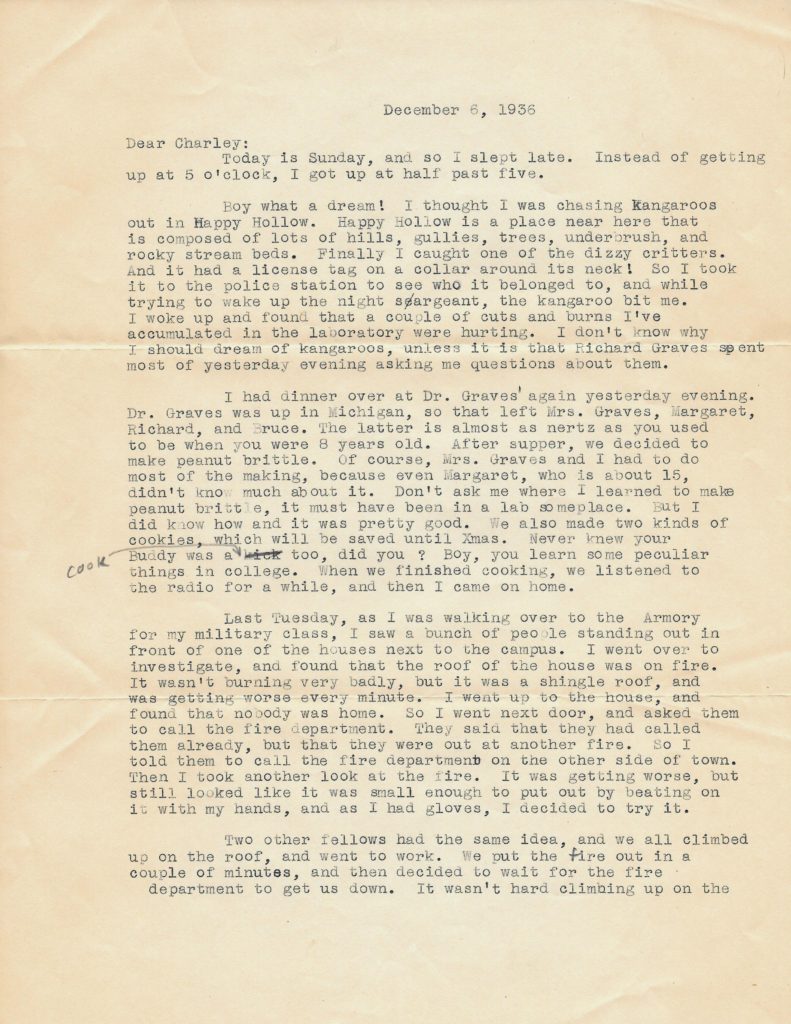
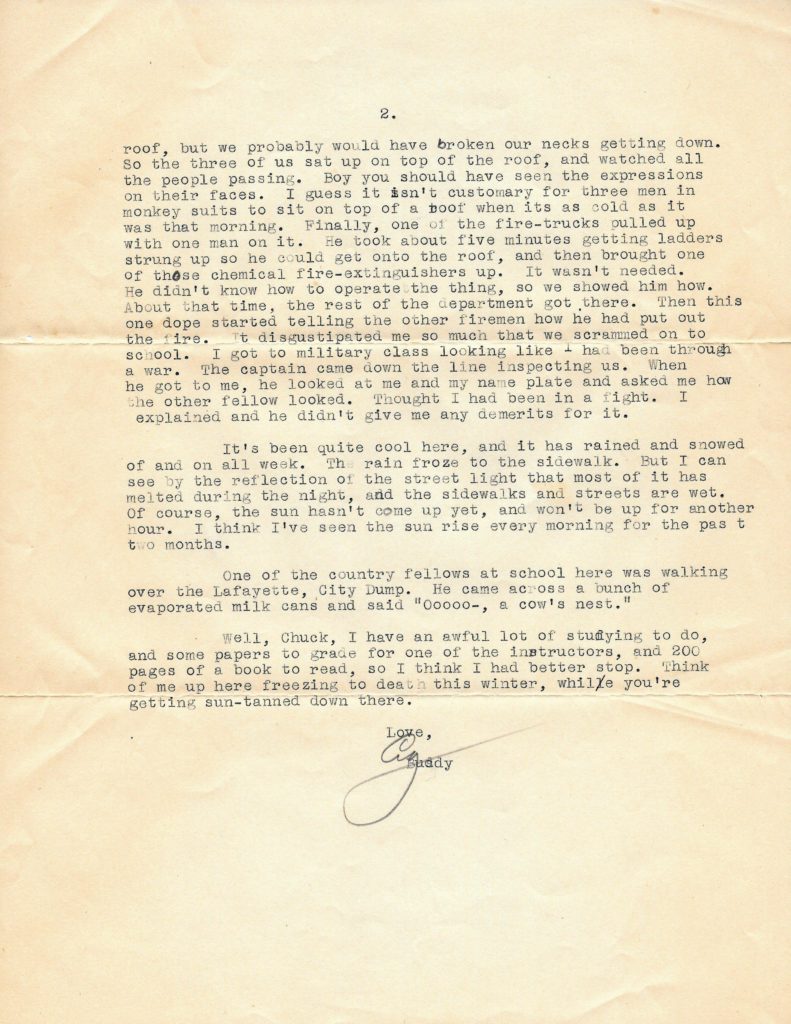
Dear Charley:*
Today is Sunday, and I so I slept late. Instead of getting up at 5 o’clock, I got up at half past five.
Boy what a dream! I thought I was chasing Kangaroos out in Happy Hollow. Happy Hollow is a place near here that is composed of lots of hills, gullies, trees, underbrush, and rocky stream beds. Finally, I caught one of the dizzy critters. And it had a license tag on a collar around its neck! So I took it to the police station to see who it belonged to, and while trying to wake up the night sergeant, the kangaroo bit me. I woke up and found that a couple of cuts and burns I’ve accumulated in the laboratory were hurting. I don’t know why I should dream of kangaroos, unless it is that Richard Graves spent most of yesterday evening asking me about them.
I had dinner over at Dr. Grave’s again yesterday evening. Dr. Graves was up in Michigan, so that left Mrs. Graves, Margaret, Richard, and Bruce. The latter is almost as nertz as you used to be when you were 8 years old. After supper, we decided to make peanut brittle. Of course, Mrs. Graves and I had to do most of the making, because even Margaret, who is about 15, didn’t know much about it. Don’t ask me where I learned to make peanut brittle, it must have been in a lab someplace. But I did know how and it was pretty good. We also made two kinds of cookies, which will be saved until Xmas. Never knew your Buddy was a cook too did you? Boy, you learn some peculiar things in college. When we finished cooking, we listened to the radio for a while, and then I came on home.
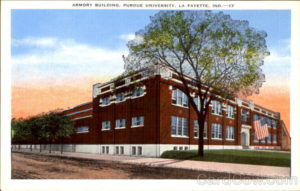
Last Tuesday, as I was walking over to the Armory for my military class, I saw a bunch of people standing out in front of one of the houses next to the campus. I went over to investigate, and found that the roof of the house was on fire. It wasn’t burning very badly, but it was a shingle roof, and was getting worse every minute. I went up to the house, and found that nobody was home. So I went next door, and asked them to call the fire department. They said that they had called them already, but that they were out at another fire. So I told them to call the fire department on the other side of town. Then I took another look at the fire. It was getting worse, but still looked like it was small enough to put out by beating on it with my hands, and as I had gloves, I decided to try it.
Two other fellows had the same idea, and we all climbed up on the roof, and went to work. We put the fire out in a couple of minutes, and then decided to wait for the fire department to get us down. It wasn’t hard climbing up on the roof, but we probably would have broken our necks getting down. So the three of us sat up on top of the roof, and watched all the people passing. Boy you should have seen the expressions on their faces. I guess it isn’t customary for three men in monkey suits to sit on top of the roof when it’s as cold as it was that morning. Finally, one of the fire-trucks pulled up with one man on it. He took about five minutes getting ladders strung up so he could get onto the roof, and then brought one of those chemical fire-extinguishers up. It wasn’t needed. He didn’t know how to operate the thing, so we showed him how. About that time, the rest of the department got there. Then this one dope started telling the other firemen how he had put out the fire. It disgustipated me so much that we scrammed on to school. I got to military class looking like I had been through a war. The captain came down the line inspecting us. When he got to me, he looked at me and my name plate and asked me how the other fellow looked. Thought I had been in a fight. I explained and he didn’t give me any demerits for it.
It’s been quite cool here, and it has rained and snowed off and on all week. The rain froze to the sidewalk. But I can see by the reflection of the streetlight that most of it has melted during the night, and the sidewalks and streets are wet. Of course, the sun hasn’t come up yet, and won’t be up for another hour. I think I’ve seen the sun rise every morning for the past two months.
One of the country fellows at school here was walking over the Lafayette City Dump. He came across a bunch of evaporated milk cans and said, “Ooooo–, a cow’s nest!”
Well, Chuck, I have an awful lot of studying to do, and some papers to grade for one of the instructors, and 200 pages of a book to read, so I think I better stop. Think of me up here freezing to death this winter, while you’re getting sun tanned down there.
Love Buddy
*”Charley” is Charles F. Sharrard, Jr., my father, and his mother, Nena Sharrard, was Buddy’s older sister. Nena separated from her husband, Charles F. Sharrard, Sr., just a few months after Charles Jr. was born. She left Wheeling, W. Va. and moved to 335 Montclair Ave. in Glen Ellyn to live with her parents and her brother. My dad spent his early childhood with his uncle “Buddy” who was like a big brother to him. 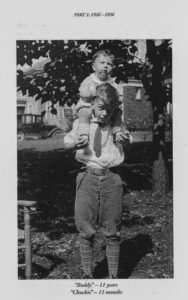
In 1936, Nena took a job at a small resort in Coolidge, Az. and my dad, age 10, stayed with her there until they returned in April 1937. Nena’s parents had just moved to an apartment in Oak Park, IL at that time.
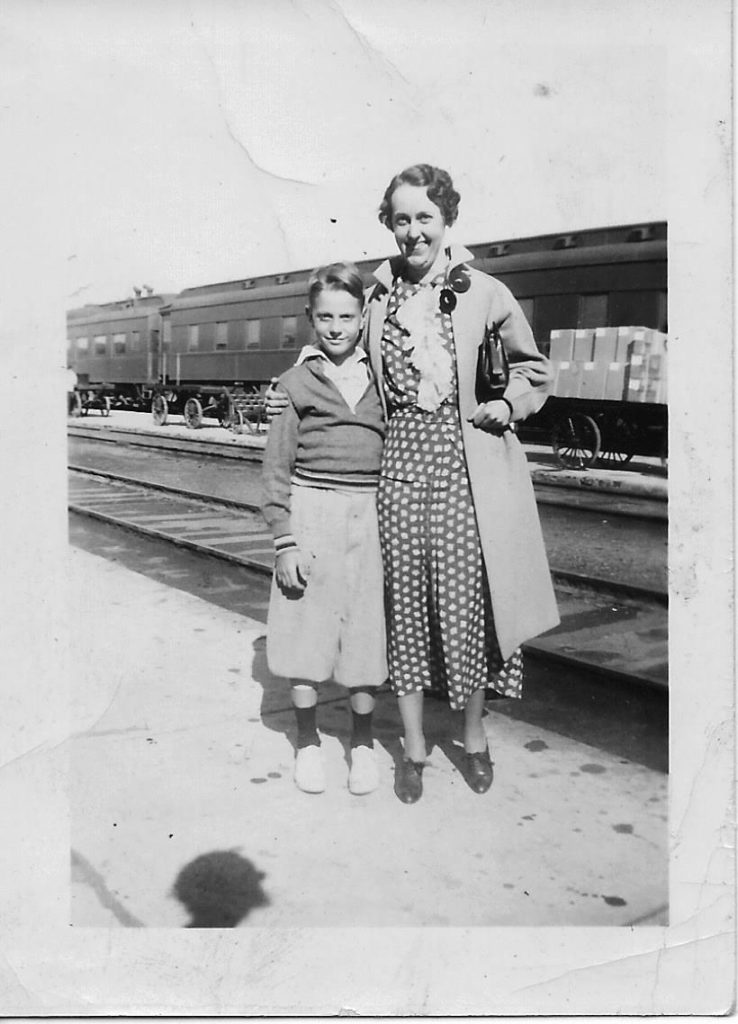
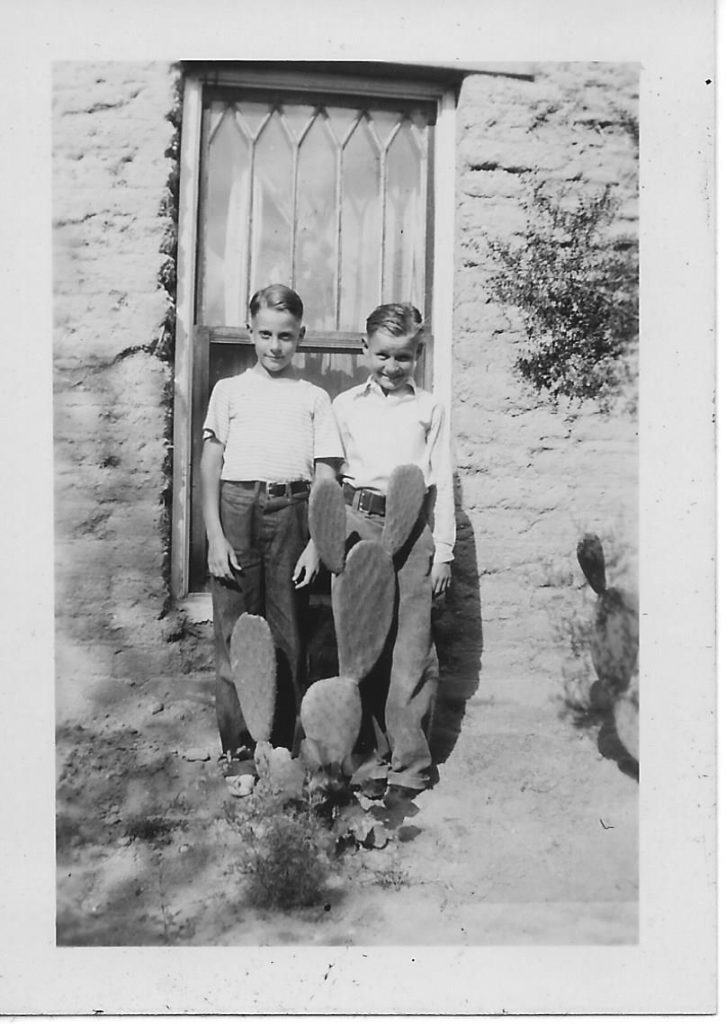
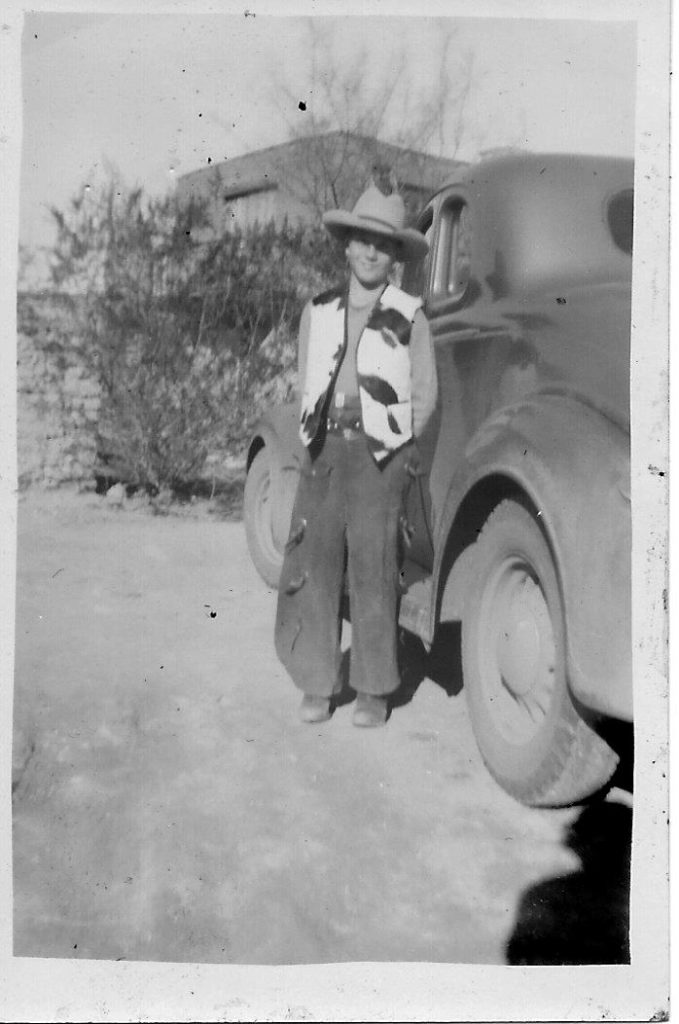
From “My Life. . . My Way”, Charles F. Sharrard, Jr, Book One, p. 13, 15:
Buddy was my uncle, my mother’s “little brother,” and most of all, my idol. He stood about 5’10”, was handsome, lithe, and muscular, with a strong brow line and penetrating eyes that could look playful or flash anger as the situation demanded. Only ten years older than I, he was like a big brother, but the ten year difference also left him little time to play with me. Yet, when he did, he showed a genuine affection for me that I never forgot.
When I was five, Buddy was a sophomore in high school, doing all the things high school kids did in those days–going to school functions, being active in sports (the track team), studying hard, always moving at a fast clip, and rapidly showing signs of being the family genius. Before Buddy had finished high school, he was writing articles for Electrical Engineering [sic “Radio”] magazine on a regular basis and entered Purdue University on scholarship. He was on his way to greatness.
Buddy had a fine mind and a good set of hands as well. His electronics pursuit started with a crystal radio set, which he made from scratch. Following this, he built one set after another, each one bigger and more powerful than the last. As a ham radio operator, he made contacts all over the western hemisphere. His call letters were W9KWP and one of my great pastimes was going through the various cards from his contacts in all those far away countries. During his involvement with ham radio, he taught me Morse Code, which we would use in tests of his equipment between the second story and the basement of the house. Not a very long distance but might exciting to me!
Buddy had a close friend, Johnny Huntoon, who was another ham operator in Glen Ellyn. On weekends they’d pack up all their equipment, headphones, etc. and a tent. Their destination was Cowpasture Hill, the highest point in our area, where the reception would be especially good. Some of those nights, during electrical storms, Grandfather paced the floor for hours worrying if they were okay.
